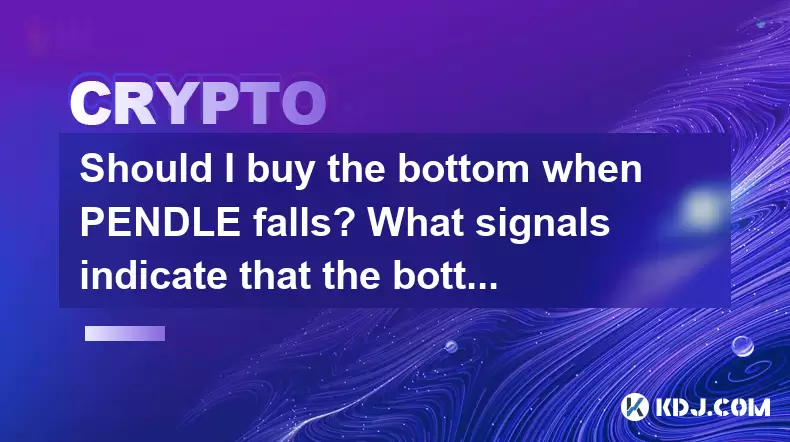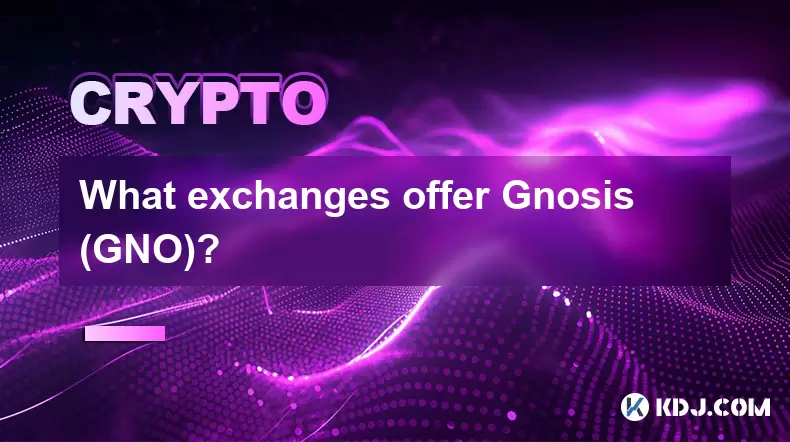-
 Bitcoin
Bitcoin $118600
-2.59% -
 Ethereum
Ethereum $4282
-0.42% -
 XRP
XRP $3.129
-4.21% -
 Tether USDt
Tether USDt $0.0000
0.01% -
 BNB
BNB $805.4
-1.80% -
 Solana
Solana $174.3
-5.77% -
 USDC
USDC $0.9998
-0.01% -
 Dogecoin
Dogecoin $0.2230
-6.33% -
 TRON
TRON $0.3466
1.70% -
 Cardano
Cardano $0.7745
-5.73% -
 Chainlink
Chainlink $21.37
-3.53% -
 Hyperliquid
Hyperliquid $42.93
-7.25% -
 Stellar
Stellar $0.4324
-4.94% -
 Sui
Sui $3.660
-7.17% -
 Bitcoin Cash
Bitcoin Cash $591.6
2.72% -
 Hedera
Hedera $0.2467
-7.04% -
 Ethena USDe
Ethena USDe $1.001
0.00% -
 Avalanche
Avalanche $22.92
-6.14% -
 Litecoin
Litecoin $118.8
-3.79% -
 Toncoin
Toncoin $3.378
-0.46% -
 UNUS SED LEO
UNUS SED LEO $9.011
-1.15% -
 Shiba Inu
Shiba Inu $0.00001294
-5.81% -
 Uniswap
Uniswap $11.24
0.53% -
 Polkadot
Polkadot $3.870
-6.16% -
 Cronos
Cronos $0.1662
-1.68% -
 Dai
Dai $1.000
0.02% -
 Ethena
Ethena $0.7915
-5.62% -
 Bitget Token
Bitget Token $4.414
-1.65% -
 Monero
Monero $259.3
-3.85% -
 Pepe
Pepe $0.00001120
-8.29%
Should I buy the bottom when PENDLE falls? What signals indicate that the bottom has been reached?
Buying PENDLE at its bottom can be profitable but risky; use price action, volume, RSI, and news to identify potential lows, and always diversify to mitigate risks.
May 07, 2025 at 05:07 pm

When considering whether to buy PENDLE at its lowest point, commonly referred to as the bottom, it's crucial to understand the complexities and risks involved in such a decision. PENDLE is a cryptocurrency token in the decentralized finance (DeFi) sector, focusing on yield tokenization. Buying at the bottom can be a lucrative strategy if executed correctly, but it requires careful analysis and understanding of market signals.
Understanding the Concept of Buying the Bottom
Buying the bottom refers to purchasing an asset when its price has reached the lowest point in a given period. The idea is to buy low and sell high, maximizing potential profits. However, determining the bottom is challenging, as it often becomes clear only in hindsight. For PENDLE, this means closely monitoring its price movements and market conditions.
Key Indicators to Identify the Bottom
Several technical and fundamental indicators can help identify when PENDLE might have reached its bottom. Here are some key signals to consider:
1. Price Action and Support Levels
- Price action is a critical indicator. Look for signs of a reversal after a prolonged downtrend. A double bottom pattern, where the price touches a low point twice and then starts to rise, can indicate a potential bottom.
- Support levels are price points where the asset has historically had difficulty falling below. If PENDLE's price stabilizes around a known support level, it might be approaching its bottom.
2. Volume Analysis
- Trading volume can provide insights into the strength of price movements. A significant increase in volume at a low price point can indicate that the bottom is near, as it suggests increased buying interest.
- Conversely, low volume during a price drop might suggest that the downward trend is losing momentum, potentially signaling an upcoming bottom.
3. Market Sentiment and News
- Market sentiment can greatly influence PENDLE's price. Negative news or events can drive prices down, but once the market absorbs this information, a bottom might form.
- Positive developments or partnerships within the PENDLE ecosystem can also signal a potential bottom if they coincide with price stabilization.
4. Technical Indicators
- Relative Strength Index (RSI): An RSI below 30 typically indicates that an asset is oversold and might be approaching its bottom.
- Moving Averages: A crossover of short-term moving averages above long-term ones can signal a potential reversal and the formation of a bottom.
Risks of Buying the Bottom
While buying at the bottom can be profitable, it comes with significant risks. Market volatility can lead to false signals, and what appears to be the bottom might just be a temporary pause in a longer downtrend. Additionally, timing the market is notoriously difficult, and even with all the indicators in place, there's no guarantee that the price won't drop further.
Steps to Take When Considering Buying the Bottom
If you decide to pursue the strategy of buying PENDLE at its bottom, consider the following steps:
- Monitor Price and Volume: Use charting tools to track PENDLE's price and volume over time. Look for patterns that suggest a bottom might be forming.
- Set Alerts: Use cryptocurrency trading platforms to set price alerts at key support levels or when specific technical indicators are triggered.
- Diversify: Don't put all your funds into PENDLE. Diversifying your investments can help mitigate the risk of buying at the wrong time.
- Stay Informed: Keep up with news and developments related to PENDLE and the broader DeFi sector. Information can provide context to price movements.
- Use Stop-Loss Orders: Consider setting stop-loss orders to limit potential losses if the price continues to drop after your purchase.
Practical Example of Identifying the Bottom
To illustrate how to identify the bottom, let's consider a hypothetical scenario with PENDLE:
- Price Action: PENDLE's price has been declining for several weeks, reaching a low of $0.50. It then bounces back to $0.60 before dropping to $0.50 again, forming a double bottom pattern.
- Volume: During the second drop to $0.50, trading volume spikes significantly, suggesting increased buying interest at this level.
- RSI: The RSI for PENDLE drops to 28, indicating that the token is oversold.
- News: A new partnership announcement is made, which could boost investor confidence and potentially signal the bottom.
In this scenario, the combination of these factors might suggest that PENDLE has reached its bottom at $0.50. However, it's essential to remain cautious and consider the broader market context.
Frequently Asked Questions
Q1: How can I differentiate between a temporary dip and a true bottom for PENDLE?
A1: Differentiating between a temporary dip and a true bottom requires a combination of technical analysis and understanding market sentiment. Look for sustained price stabilization at support levels, increased trading volume at lows, and positive developments within the PENDLE ecosystem. Temporary dips often lack these confirming signals and may quickly reverse.
Q2: Can I use automated trading bots to help identify the bottom for PENDLE?
A2: Yes, automated trading bots can be programmed to monitor PENDLE's price and execute trades based on specific technical indicators. However, these bots should be used with caution, as they can't account for all market nuances and may trigger trades based on false signals.
Q3: What role does the broader cryptocurrency market play in determining PENDLE's bottom?
A3: The broader cryptocurrency market significantly influences PENDLE's price movements. If major cryptocurrencies like Bitcoin and Ethereum are experiencing a downtrend, it's likely that PENDLE will follow suit. Conversely, a bullish market can provide a more favorable environment for PENDLE to reach its bottom and start recovering.
Q4: How should I manage my emotions when trying to buy PENDLE at the bottom?
A4: Managing emotions is crucial when attempting to buy at the bottom. Fear of missing out (FOMO) or panic selling can lead to poor decision-making. Set clear investment goals, stick to your strategy, and avoid making impulsive decisions based on short-term price fluctuations. Regularly reviewing your investment thesis and staying informed can help keep emotions in check.
Disclaimer:info@kdj.com
The information provided is not trading advice. kdj.com does not assume any responsibility for any investments made based on the information provided in this article. Cryptocurrencies are highly volatile and it is highly recommended that you invest with caution after thorough research!
If you believe that the content used on this website infringes your copyright, please contact us immediately (info@kdj.com) and we will delete it promptly.
- Dogecoin, Presale, Surge: Riding the Meme Coin Wave
- 2025-08-12 11:10:12
- Dogecoin, Tron, and the ROI Reality Check: What's a Crypto Investor to Do?
- 2025-08-12 11:15:12
- Ethereum Layer-2 Scaling Competition Heats Up as ETH Breaks $4K
- 2025-08-12 10:30:12
- China Regulation, Stablecoins, and BNB Presale: Navigating the Crypto Landscape
- 2025-08-12 11:30:12
- Meme Coins, Investment, and Token Burns: What's Hot in 2025?
- 2025-08-12 10:30:12
- China's National Security Alarm Bells Ring Over Worldcoin's Iris Scans
- 2025-08-12 11:35:12
Related knowledge

How to purchase Aragon (ANT)?
Aug 09,2025 at 11:56pm
Understanding Aragon (ANT) and Its PurposeAragon (ANT) is a decentralized governance token that powers the Aragon Network, a platform built on the Eth...

Where to trade Band Protocol (BAND)?
Aug 10,2025 at 11:36pm
Understanding the Role of Private Keys in Cryptocurrency WalletsIn the world of cryptocurrency, a private key is one of the most critical components o...

What is the most secure way to buy Ocean Protocol (OCEAN)?
Aug 10,2025 at 01:01pm
Understanding Ocean Protocol (OCEAN) and Its EcosystemOcean Protocol (OCEAN) is a decentralized data exchange platform built on blockchain technology,...

Where can I buy UMA (UMA)?
Aug 07,2025 at 06:42pm
Understanding UMA and Its Role in Decentralized FinanceUMA (Universal Market Access) is an Ethereum-based decentralized finance (DeFi) protocol design...

What exchanges offer Gnosis (GNO)?
Aug 12,2025 at 12:42pm
Overview of Gnosis (GNO) and Its Role in the Crypto EcosystemGnosis (GNO) is a decentralized prediction market platform built on the Ethereum blockcha...

How to buy Storj (STORJ) tokens?
Aug 09,2025 at 07:28am
Understanding Storj (STORJ) and Its Role in Decentralized StorageStorj is a decentralized cloud storage platform that leverages blockchain technology ...

How to purchase Aragon (ANT)?
Aug 09,2025 at 11:56pm
Understanding Aragon (ANT) and Its PurposeAragon (ANT) is a decentralized governance token that powers the Aragon Network, a platform built on the Eth...

Where to trade Band Protocol (BAND)?
Aug 10,2025 at 11:36pm
Understanding the Role of Private Keys in Cryptocurrency WalletsIn the world of cryptocurrency, a private key is one of the most critical components o...

What is the most secure way to buy Ocean Protocol (OCEAN)?
Aug 10,2025 at 01:01pm
Understanding Ocean Protocol (OCEAN) and Its EcosystemOcean Protocol (OCEAN) is a decentralized data exchange platform built on blockchain technology,...

Where can I buy UMA (UMA)?
Aug 07,2025 at 06:42pm
Understanding UMA and Its Role in Decentralized FinanceUMA (Universal Market Access) is an Ethereum-based decentralized finance (DeFi) protocol design...

What exchanges offer Gnosis (GNO)?
Aug 12,2025 at 12:42pm
Overview of Gnosis (GNO) and Its Role in the Crypto EcosystemGnosis (GNO) is a decentralized prediction market platform built on the Ethereum blockcha...

How to buy Storj (STORJ) tokens?
Aug 09,2025 at 07:28am
Understanding Storj (STORJ) and Its Role in Decentralized StorageStorj is a decentralized cloud storage platform that leverages blockchain technology ...
See all articles

























































































